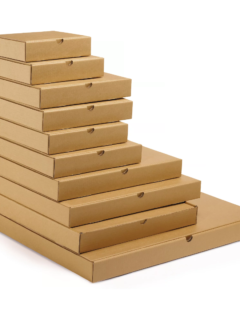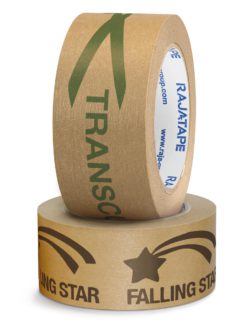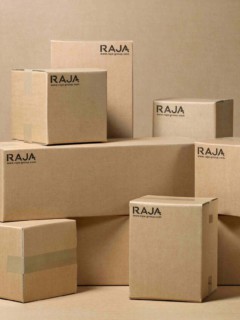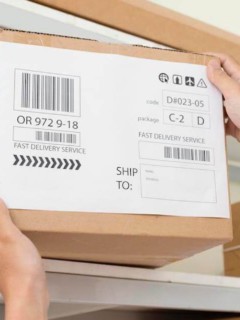Packing parcels is a very important part of the sales chain. Warehousemen, who work in the mail order warehouses of online shops, are in charge of packing the parcels. In theory, this task seems trivial – but it is not. Several rules must be followed. They must ensure that there are no oversights or mistakes when packing parcels – this could lead to customer dissatisfaction and, consequently, a bad impression of the online shop. The e-commerce industry is competitive, so individual shipping companies cannot afford negative feedback. What are the most common mistakes when packing parcels? What to avoid?
Too small a box – why is the size of the box so important?
To begin with, learn about the 4 effective steps of packing parcels for shipping: outer packaging, inner filling, sealing (closing), description (labelling).
Thecardboard box into which the product will be packed should fit it in terms of size, shape. It is recommended that there should be about 5 cm of free space, “slack”, between the item to be shipped and the walls of the cardboard box.
Theweight of the product is also important. Orders prepared for shipment may be heavier than a cardboard box, in which case a sturdier box should be chosen and possibly reinforced. In the e-commerce industry, cardboard boxes made of 5-layer or 7-layer cardboard are most commonly used.
A serious mistake that can be made when packing parcels is the lack of information on weight, product specifications, e.g. in the form of a warning label. Its presence is particularly important when transporting glass, fragile, delicate products. The courier, being unaware of the fragile content, may not treat the consignment with due care, which could lead to the item being damaged.
Incorrectly selected carton type
While there is little philosophy involved with larger goods (parcels are packed in sturdy corrugated cardboard boxes), there can be a problem with smaller items. Every warehouseman should be aware of what the packaging fits into. Among others, the following can be used:
- Bubble envelopes – as the name suggests, these are filled with bubble wrap to protect the interior from possible damage. Some companies personalise them with graphics or brand logos (a great form of marketing). Bubble envelopes work well for shipping clothing, jewellery, electronic accessories and other small items.
- Cut (die-cut) cartons – they can be personalised, which is particularly popular in the beauty industry. They can accommodate small and medium sized items (with appropriate filling).
- Die-cut cardboardboxes – are a special type of box, the size of which has been adapted to the size of the items to be sent. It can be more expensive than a cut cardboard box.
Not everyone knows that – in some situations – it is possible to pack small goods exclusively in stretch foil. Although it will do an excellent job of protecting the interior from moisture, it may not prove to be sufficient protection when exposed to impact. Stretch film instead of cardboard is only suitable for small, robust, damage-resistant items.
Lack of or improper filling of the shipment
Aproperly selected and labelled carton is the first step to success – every e-commerce company must pay attention to this. The next step is security.
The vast majority of parcels should contain filling – the most popular product of this type is bubble wrap. Special attention should be paid to items that have sharp corners or delicate edges. There is a high probability that – without protection – they could be damaged. It is best to cover them with several layers of bubble wrap (bearing in mind the critical points) and seal the whole with packing tape.
Not having any filler inside the parcel is a serious mistake. It guarantees strong, solid protection for the product. The item to be shipped will be stiffened, without tipping sideways. The degree of filling should be appropriately adapted to the inside of the parcel. If there are several items inside, they must be padded so that they do not come into contact with each other or the carton.
No stretch film
Another cardinal mistake that sometimes occurs when packing parcels is the lack of ecological stretch film. This product effectively strengthens and protects the carton against possible mechanical damage, moisture (particularly important), and opening by unauthorised third parties.
Stretchfilm is a unique, highly stretchable and durable material. It adapts perfectly to the surface of the carton being wrapped, at the same time – thanks to its lightness – not increasing its weight. It is most useful when packing larger, non-standard sized parcels.
Stretch film comes in various colours – black (opaque), transparent and coloured. The first type is most often used in e-commerce, as it prevents the contents of the parcel from being seen. This minimises the risk of theft.
Lack of tight sealing of the parcel
The edges of each parcel should be sealed with high-quality adhesive tape (preferably ecological packing tape). It is advisable to look for an adhesive tape made of rubber oil, which provides adequate adhesion (regardless of weather conditions).
Another mistake that happens during packing is the inadequate way of sealing the package. Sometimes stockists and retailers do not seal the openings of the parcel completely. This is a cardinal mistake. As a result of leaving unnecessary gaps on the carton, it can happen that the consignment accidentally unseals in bad weather conditions. How can this be remedied? E-commerce companies should invest in an adhesive tape dispenser or dispenser that allows the tape to be accurately attached to the carton.
Lack of warning labels
Proper labelling of the shipment is essential – especially for e-commerce companies. The most important function is fulfilled by so-called warning labels, which are affixed to the packed, secured, sealed package. Learn about the most important types of parcel warning labels. The warning label “Caution! Glass” is an important piece of information for the warehouseman, employees of the dispatch sorting office, courier – in a given parcel there are glass, fragile, delicate objects, therefore the parcel should be treated with extreme care.
The “Top/Bottom” warning label is also quite popular, indicating where the bottom and top of the cardboard box are located. This is a particularly important label when shipping liquids or items that should be transported in one position, such as flowers.
Warning stickers should be positioned in a place visible to the courier, preferably right next to the consignment note (a.k.a. courier label, shipping label). If you want to expand your knowledge, check out how to prepare parcel labels.
Cartons and other packaging materials – only at RAJA
The RAJA company knows how to take care of the positive customer experience of an online shop. It stands out from other companies in the packaging industry. The proposed cardboard boxes, parcel fillers, packaging accessories or warning stickers are 100% ecological, recyclable. RAJA is aware that high quality delivery in e-commerce means a greater chance of business growth (so there is no doubt that delivery quality in e-commerce matters).
Interested parties can choose from a variety of cardboard packaging, including cardboard tubes, cardboard boxes with automatic bottoms, adjustable height, reinforced, flat, long.














